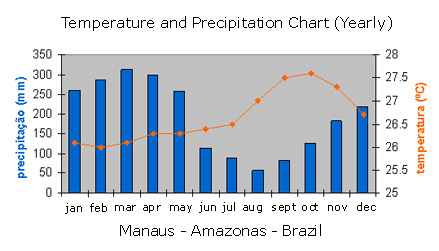The phenomenon of wildfires has become increasingly prevalent across the globe, a stark illustration of the interconnectedness of climate change and environmental degradation. As global temperatures continue to rise, the incidence and severity of forest fires are intensifying, compelling communities, wildlife, and ecosystems to confront this calamitous reality.
To understand the wildfire link to climate change, one must first grasp the mechanics of fire itself. Wildfires occur when combustible materials such as dry vegetation, timber, and organic matter ignite, fueled by hot, arid conditions. These conditions become exacerbated by global warming. The interplay between rising temperatures, prolonged droughts, and erratic precipitation creates an ideal environment for fires to flourish.
Discerning the rationale behind this escalation is essential. Higher ambient temperatures can desiccate vegetation, reducing its moisture content, thus rendering it highly flammable. The United States, for example, has experienced a drastic increase in wildfire activity, with the western states bearing the brunt. The National Interagency Fire Center has reported that the average number of acres burned annually has more than doubled since the 1970s. This alarming trend has resulted in severe threats to human life, property, and wildlife.
Additionally, it is crucial to consider the role of human activity in exacerbating wildfires. Urbanization, land-use changes, and inappropriate forest management practices have harnessed nature’s fury, essentially setting the stage for large-scale infernos. As habitats are encroached upon and wildlands are cleared for development, the delicate balance between human needs and ecological integrity is disrupted, bolstering the likelihood of wildfires.
Moreover, climate change contributes to the occurrence of extreme weather patterns, including heightened winds and unexpected lightning storms, which serve as catalysts for fire ignition. The intensity and duration of heatwaves have increased, creating a breeding ground for wildfires. Such atmospheric conditions can ignite fires that may otherwise remain benign, as well as escalate their spread beyond control.
Different types of wildfires exist, each arising under varying circumstances. Ground fires typically occur when underground materials are ignited. These smoldering fires can go undetected for extended periods, remaining dormant until conditions provoke a flare-up. Surface fires, on the other hand, burn through the leaf litter and underbrush. They are often characterized by their efficiency in consuming dead vegetation. Crown fires, the most aggressive of these, leap from treetop to treetop, decimating vast expanses of forest with alarming speed and intensity. Understanding these classifications can help in assessing the risks and implementing proactive measures against potential outbreaks.
The economic ramifications of wildfires are profound and far-reaching. The cost associated with firefighting efforts, property loss, and infrastructure damage amounts to billions annually. The government budgets allocated for disaster management strain public resources, necessitating financial prioritization and allocation. Small towns and rural communities often bear the brunt of such natural disasters, facing the daunting task of rebuilding their lives in the wake of devastation, sparking ongoing cycles of hardship.
The social implications are equally significant. Displacement of communities and loss of livelihoods due to wildfires can yield cascading effects, leading to mental health crises and social unrest. As habitat loss and fragmentation occur, wildlife populations are also thrust into precarious situations. Many species face extinction due to habitat degradation, diminishing genetic diversity, and increased competition for limited resources.
In response to the environmental challenges posed by wildfires, innovative solutions are imperative. Strategic forest management practices, such as controlled burns and selective logging, can help mitigate future risks. These methods aim to reduce accumulated fuel loads and enhance forest resilience to fire outbreaks. Education and community engagement play pivotal roles in fostering resilience, equipping residents with essential knowledge and skills for fire prevention and survival.
The advancement of technology also presents opportunities to improve wildfire management. Satellite imagery and remote sensing allow for real-time monitoring of fire conditions, enabling quicker responses to emerging threats. Unmanned aerial vehicles (UAVs) have also been employed to survey areas at risk, delivering crucial data on hot spots and enabling effective resource allocation for firefighting efforts.
Climate change mitigation strategies must focus on reducing greenhouse gas emissions, thereby addressing the root causes of changing weather patterns. Transitioning to renewable energy sources, enhancing energy efficiency, and promoting sustainable agricultural practices can contribute significantly to curbing climate change impacts. It is vital for policymakers, industries, and individuals alike to cultivate an ethos of sustainability, working collectively towards a future wherein wildfires are no longer an inevitable consequence of climate warming.
In conclusion, the nexus between climate change and increasing wildfire prevalence is an urgent environmental concern. By emphasizing the need for informed policies, community preparedness, and innovative technological solutions, society can forge a more resilient future in which both people and ecosystems can thrive. As temperatures continue to rise, one cannot overlook the formidable force of nature, nor the necessity to staunchly advocate for strategies that minimize the catastrophic impact of wildfires on our planet.







